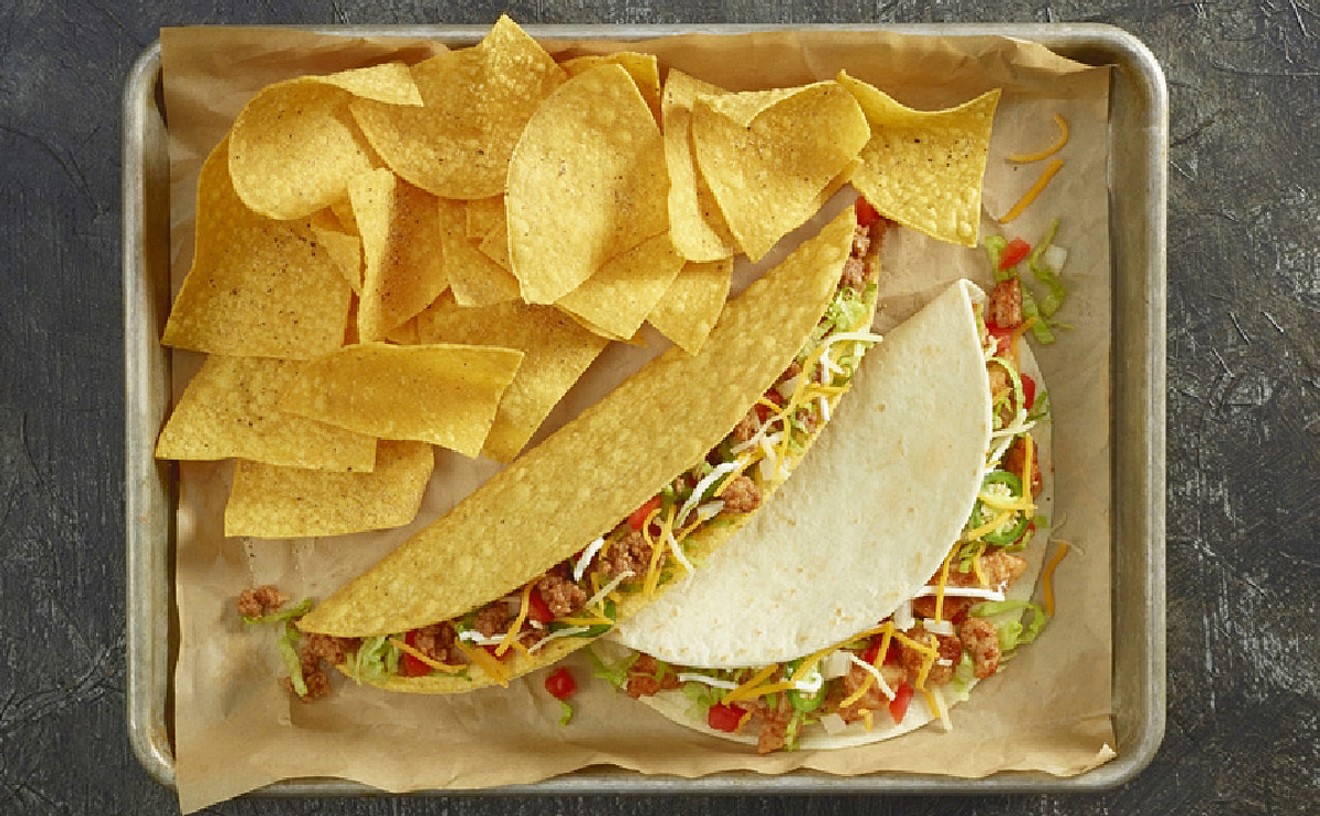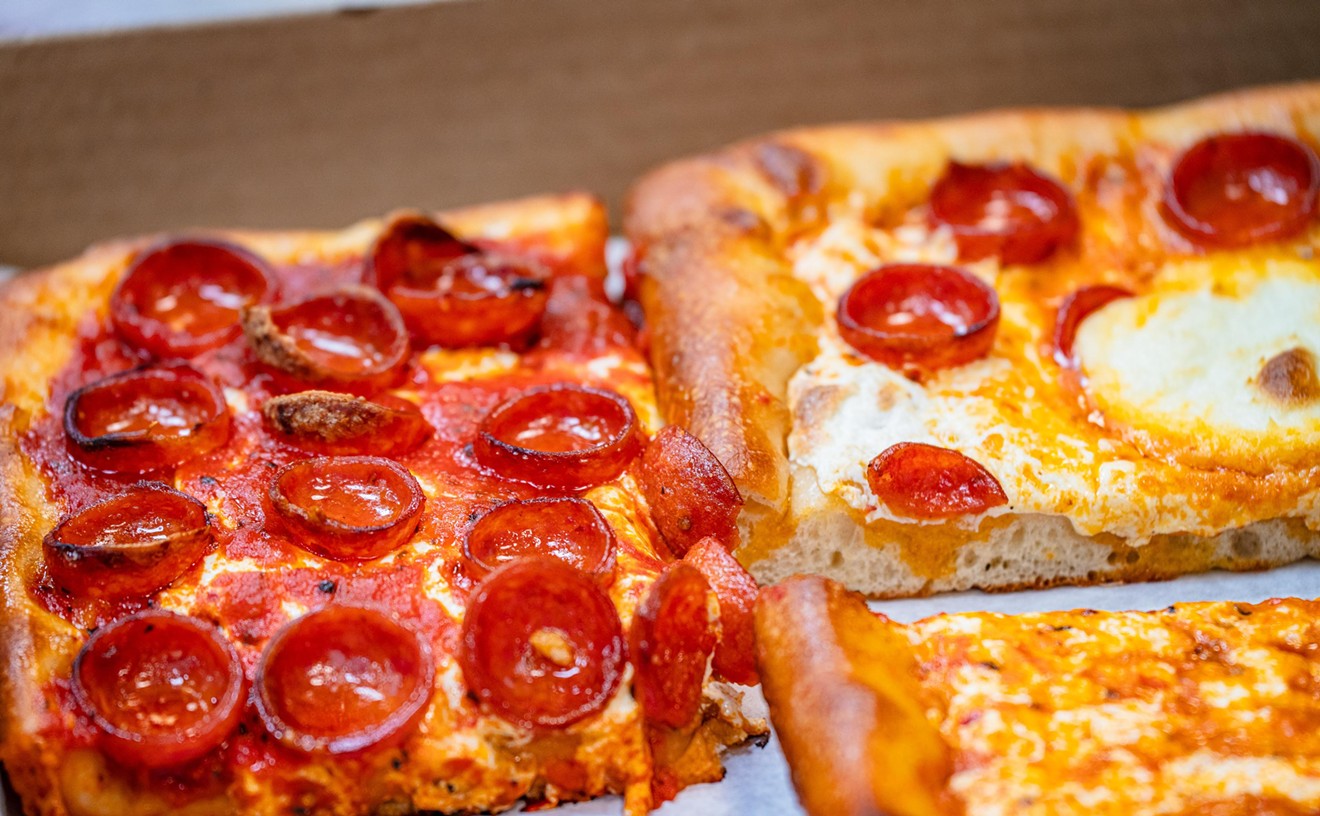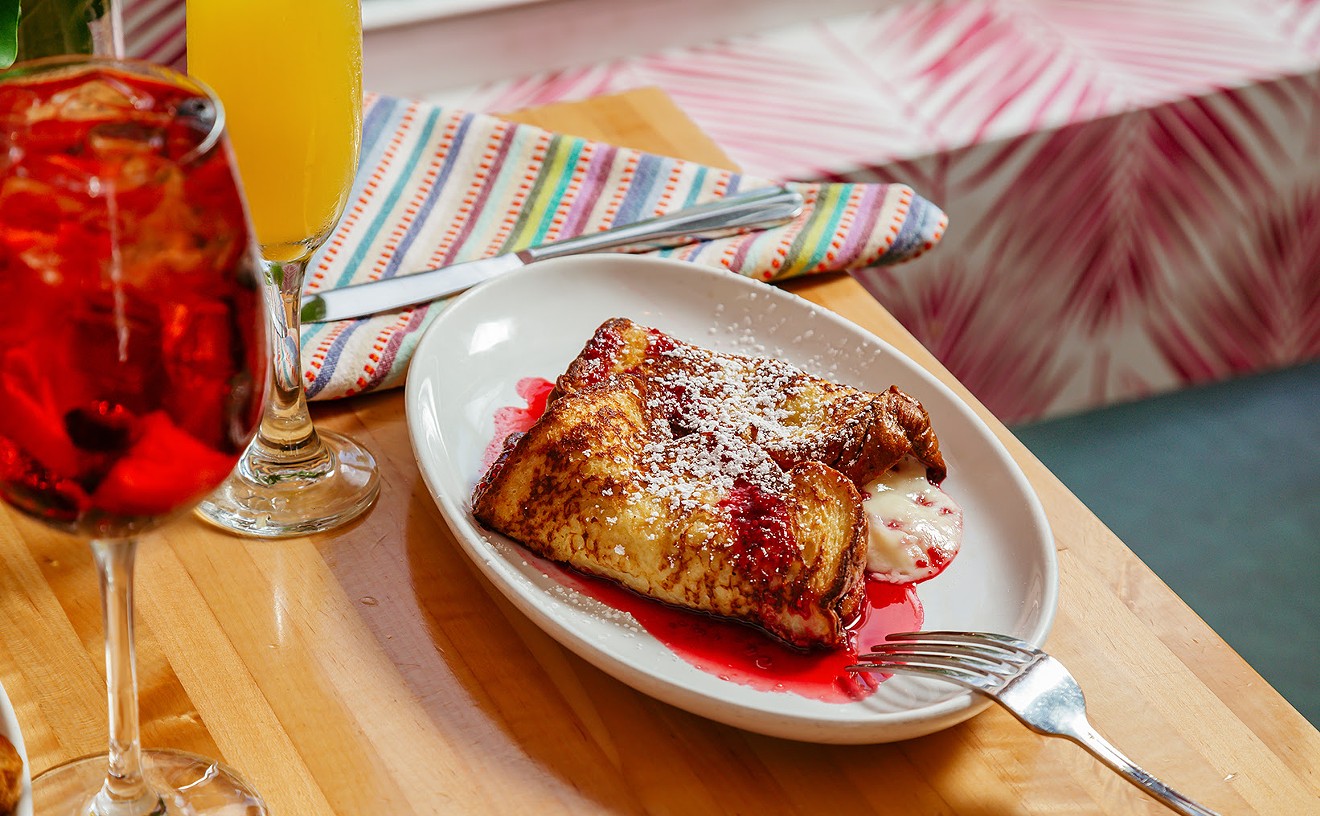View our Essensia Restaurant & Lounge slide show.
Essensia essentially sprawls its way across a softly lit, linen-draped dining room; a long, curved plantation-style patio with oversize ceiling fans and flowing drapes; and a small, well-foliated garden — nearly 200 seats in all, and more if you include the Essensia Lounge. How can it be that a relatively low-profile establishment, located on a nondescript stretch of Collins Avenue and tucked away in the back of the Palms Hotel & Spa lobby, fills so many of those chairs? The answer probably lies in the quality of the dining experience, which is solid — even while the spa cuisine needs to be more tightly executed.
Executive chef Frank Jeannetti's ascension through the ranks of Miami's culinary hierarchy also has been largely hidden from public view. He has paid dues through a quarter-century of work in kitchens ranging from Danielle's in New York to local haunts such as the Biltmore Hotel, Pearl Champagne Lounge, Nemo, and Pacific Time. Prior to the Essensia gig, Jeannetti was operating under the radar with his catering business.
The cuisine is tagged "the pure essence of taste," which is the sort of boastful appraisal better left, I think, to restaurant critics. There's no denying, however, that the menu is chock full of healthful culinary concoctions. It also serves as a substantial glossary of ingredients used — their names, origins, glycemic index ratings, and so forth. House-made pastas, for instance, have a low glycemic index, are cholesterol-free, and include added ingredients that promise to increase "endyent" benefits, whatever those are.
In striving for salubriousness, Jeannetti and sous chef Vince Bienich use sustainable seafood, hormone-free meats, and organically grown products from local purveyors such as Triggerfish and Paradise Farms. Reasonably priced wines are tendered too, categorized as either sustainable, organic, biodynamic, or some combination thereof. Many are offered by the glass, and diners can partake of a flight trio for as little as $10.
Food prices fly a little higher. Main courses are within reason — fish dishes $25 to $29, meats $24 to $34. Appetizers, though, take off at $14 to $22, and desserts go for $10. It adds up to an expensive meal.
An amuse-bouche of smoked salmon mousse atop a teeny fried fingerling potato crouton arrived first, followed by a basket containing crusty slices of French white bread with organic butter and black olive tapenade. Of the seven appetizers and six salads to consider as starting points, none better exemplifies Essensia's natural approach than organic orchid petal salad. Nasturtium leaves and the namesake petals really add only a whisper of garden flavor; the real appeal lies in a luscious medley of baby greens, petite sweet tomatoes, crunchy kernels of popped hominy, ripe blackberries, and rust-colored slices of fresh mamey — all lavished with a tart/sweet key lime-lavender-honey vinaigrette.
Another bracing composition brings smoky snippets of duck breast scattered atop baby spinach leaves and napa cabbage, with mirin-marinated apricots, mandarin orange segments, and skinny, crisp rice noodles providing textural contrasts. A mandarin-hoisin dressing was slightly sweet, but clean rather than cloying.
Appetizers appealed in a likewise light manner. Tender red slices of seared, five-spice lamb loin get plated with hummus, Greek olive tapenade, a scattering of chickpeas, a drizzle of paprika oil, and warmed pita triangles. More tapenade, this time laced with tomato, topped a tasty trio of seared, butterflied Middle Eastern-spiced sardines. Beneath each medium-size fish was a compressed little log of desiccated "parsley gratin" that looked a little like rabbit food. A full portion of three sardines is $22; a "half-portion," one sardine, is $14. Is it picayune to point out that the latter should probably be referred to as a "third-portion" — and marked a third of the price?
Main courses were more problematic. A thick, compact square of miso-lacquered North Atlantic black cod boasted all the attributes that make this Nobu classic one of the most copied dishes in America: large, succulent, semitranslucent flakes of fish burnished with a sweet glaze. Celery root purée on one side of the cod passed muster, but thin slices of organic radish salad on the opposite part of the plate tasted as though marinated in water until all vestiges of flavor were removed.
Wild Alaskan halibut is another fat-flaked fish, but the thick, narrow, rectangular serving here was overcooked and underseasoned. Accompaniments were a dry, teeny, half-cooked fennel bulb; a thick, flavorless paste of "fire-roasted vine-ripened tomato ragout"; and a lobster-Yukon gold potato hash that was skimpy on the crustacean. This is the sort of dish that gives "spa cuisine" a bad name — although ironically it's one of just two seafood items not designated as such.
Better was a seared, herb-coated free-range chicken breast with wing bone attached. Full-flavored and juicy, the bird was bedded upon a tasty vinaigrette-dressed salad of gigante and fava beans, spinach, and strips of red onion and red pepper. It was such a sprightly, summery plate of food that we didn't mind it wasn't a "cassoulet with garlic-wilted spinach," as described. What isn't acceptable was the lack of "watermelon-jalapeño salsa" — the most alluring part of the menu description.
There are smiles all around Essensia, and the good-vibe waiters know the menu pretty well. That said, on one visit, our overworked server was slow in getting just about anything to the table, and the kitchen was slower still — long lapses had us lingering for quite awhile between courses. We could have planted an herb garden in the time it took to get the check.
Pastry chef Gail Goetsch, who formerly worked under dessert doyen Hedy Goldsmith, focuses on delicacy, not decadence. Apricot tart — moist half-moons of the baked fruit arranged atop a buttery crust and accompanied by a scoop of ginger-almond ice cream on the side — was terrific. Homemade sorbets allow for a bright finish as well. We sampled two flavors as components of other desserts: Key lime sorbet enlivened a buoyant cylinder of angel food cake, and a tiny scoop of mango sorbet — with a velvety texture and electric fruit flavor — was the highlight of a refreshing coconut tapioca soup.










